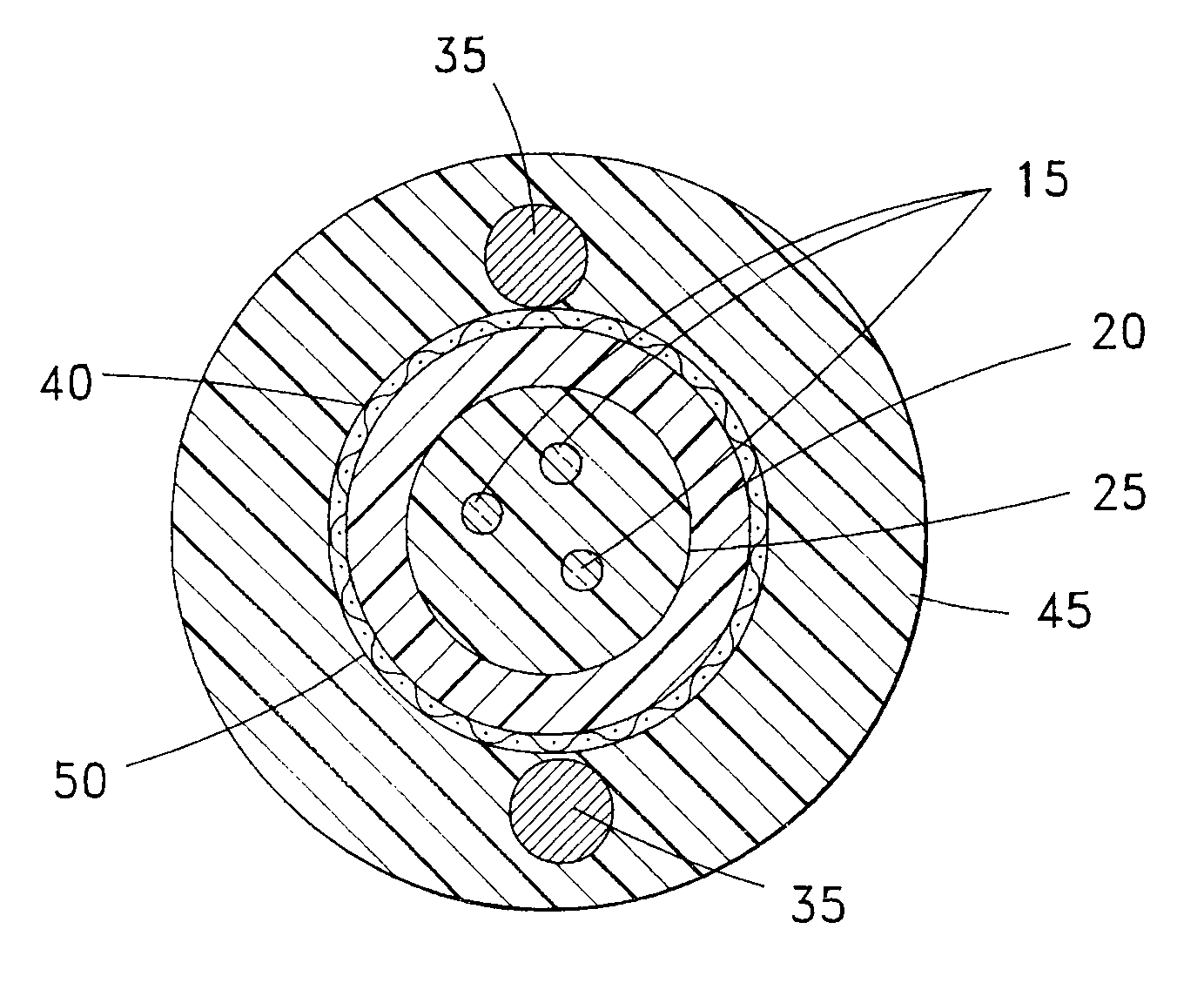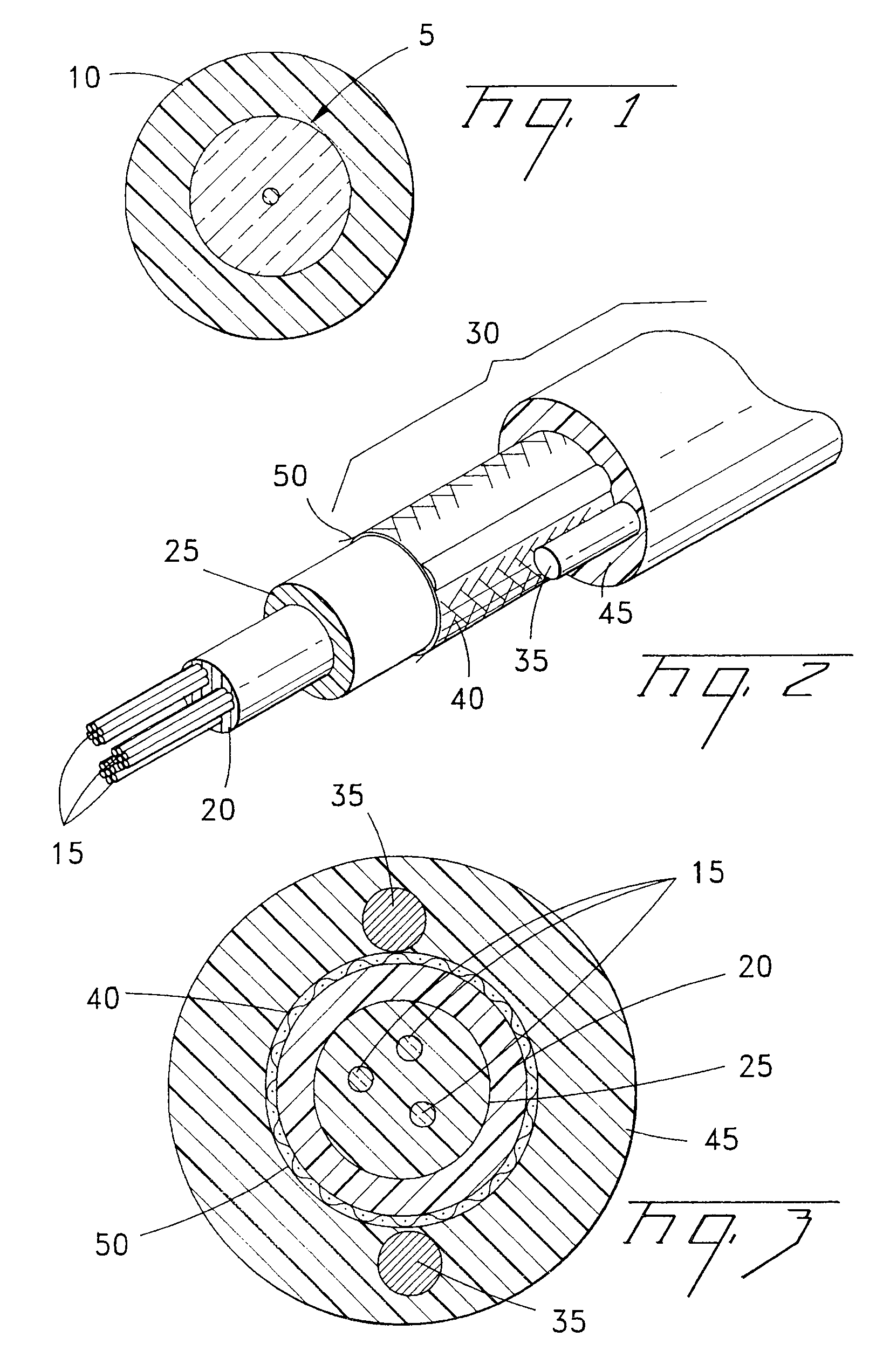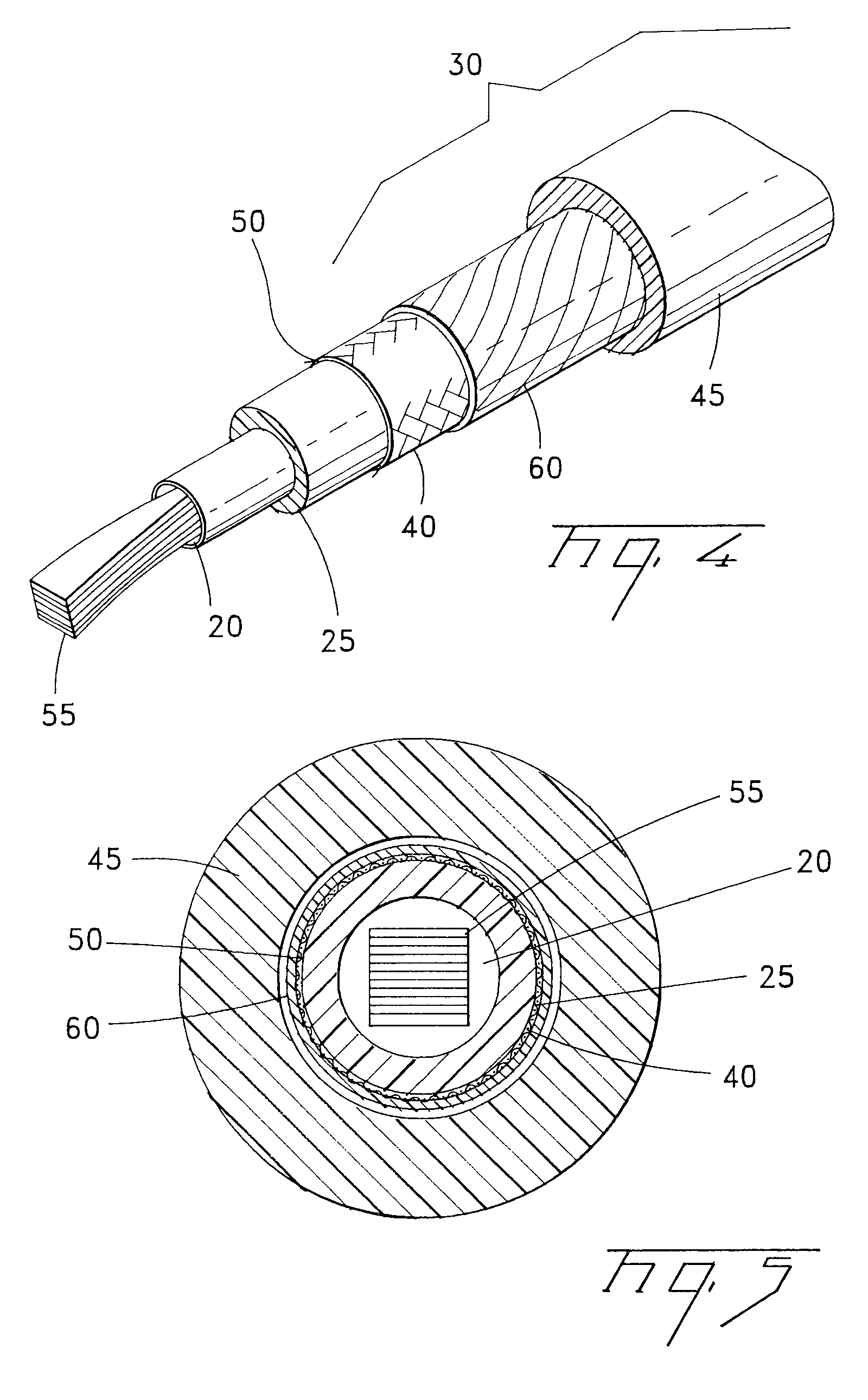Communication cable containing novel filling material in buffer tube
a buffer tube and communication cable technology, applied in the field of communication cables, can solve the problems of unsuitable contact with optical fibers, unsatisfactory optical fibers, and inability to completely interchange, so as to reduce the strain on optical fibers, facilitate handling, and inhibit dripping
- Summary
- Abstract
- Description
- Claims
- Application Information
AI Technical Summary
Benefits of technology
Problems solved by technology
Method used
Image
Examples
Embodiment Construction
Accordingly, the present invention relates to a cable containing at least one optical fiber within a core or buffer tube, a space between the optical fiber and the tube, and a filling material at least partially filling the space.
It is an object of the invention to provide an alternative to the petroleum based filling materials conventionally used in the art by providing a filling material that comprises a three-dimensional molecular network thermoplastic polymer that have bonded through crystallization, intermolecular hydrogen bonding and / or intermolecular polar attraction of functional groups and not necessarily through covalent crosslinking. The three dimensional network of thermoplastic polymer, optionally including various additives, desirably possesses suitable properties under service conditions such that temperature change does not cause large compressive strain on the fibers, desirably possesses a low modulus thereby minimizing the resulting strain on the optical fiber, inh...
PUM
 Login to View More
Login to View More Abstract
Description
Claims
Application Information
 Login to View More
Login to View More - R&D
- Intellectual Property
- Life Sciences
- Materials
- Tech Scout
- Unparalleled Data Quality
- Higher Quality Content
- 60% Fewer Hallucinations
Browse by: Latest US Patents, China's latest patents, Technical Efficacy Thesaurus, Application Domain, Technology Topic, Popular Technical Reports.
© 2025 PatSnap. All rights reserved.Legal|Privacy policy|Modern Slavery Act Transparency Statement|Sitemap|About US| Contact US: help@patsnap.com



